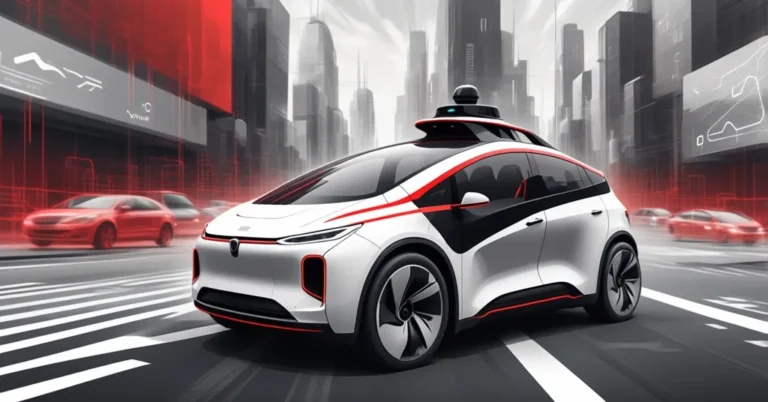Tesla’s Bold Experiment with Self-Driving Technology in the Urban Arena
Tesla is taking a bold step in its pursuit of a self-driving future by recruiting drivers in New York City to test vehicles fitted with automated driving systems. These urban trials are designed to collect crucial audio and video data to refine Tesla’s Full Self-Driving (FSD) technology—a cornerstone of its vision for autonomous ride-hailing services. By integrating real-world urban challenges with rapid innovation, Tesla is embracing a model of continuous improvement that mirrors trends in AI for business and AI automation.
Tesla in the Urban Arena
The initiative is more than an adventurous experiment; it’s a finely tuned campaign to gather data in one of the most challenging driving environments in the country. New York City’s bustling streets provide a dynamic setting to test the limits of automated driving systems. Tesla drivers navigate diverse urban scenarios, while the vehicles collect extensive audio and video records to improve the performance and safety of FSD features.
Tesla is recruiting drivers in New York City to operate cars fitted with ‘automated driving systems’.
Key to this effort is the balance between pushing technological boundaries and adhering to strict regulatory requirements. The city mandates the presence of a trained safety driver, ready to assume control at a moment’s notice—a critical safeguard amid the rapid evolution of self-driving technology.
Regulatory and Safety Challenges
Operating without the necessary permits in certain locations raises important legal and safety considerations. The New York City Department of Transportation has highlighted that permits are required for testing autonomous vehicles on public streets. This discrepancy between Tesla’s aggressive data collection strategy and local regulatory requirements highlights a tightrope walk between innovation and compliance.
In less restrictive markets such as Texas, however, Tesla received a permit to run a robotaxi service without a human driver. This contrasting regulatory landscape underscores the challenges Tesla faces when scaling its autonomous initiatives beyond controlled environments, echoing broader concerns about public safety and legal risk in the autonomous vehicle sector.
Competitive Landscape and Strategic Differentiation
Tesla’s approach stands out in a crowded field where competitors like Alphabet’s Waymo are also working to secure permits and develop their autonomous driving technologies. While Waymo appears to pace its progress with more traditional regulatory alignment, Tesla’s rapid deployment strategy aims to gather as much actionable data as possible, even if it means operating at the fringes of current legal frameworks.
This strategic divergence reflects a larger debate within the industry: Should companies prioritize rapid technological iteration even at the risk of regulatory friction, or should they take a more measured approach? For business leaders considering AI for sales and AI for business applications, Tesla’s bold experiment offers a case study in navigating high-stakes innovation under significant oversight.
Implications for Urban Mobility and Broader Business Automation
Tesla’s urban testing and its plans to roll out robotaxi services in multiple cities—from Dallas to Palo Alto—extend beyond automotive ambitions and touch on the future of urban mobility itself. By leveraging data collection in some of the most congested urban centers, Tesla positions its FSD technology not only as a next-generation transportation solution but also as a model for AI and automation in business processes.
The potential benefits are far-reaching. Improved data collection methods lead to better-performing AI models, which in turn can optimize various facets of mobility—from route efficiency to safety mechanisms. These innovations have parallels in logistics and delivery services, suggesting that Tesla’s approach might serve as a bellwether for numerous industries embracing data-driven, automated processes.
Key Perspectives on the Future of Autonomous Testing
- How will regulators respond without proper permits?
Stricter compliance measures could be enforced, potentially slowing down innovation in densely populated urban areas while reinforcing public safety.
- Can Tesla scale its robotaxi service amid legal and safety challenges?
Success will depend on Tesla’s ability to resolve ongoing legal issues and enhance safety protocols, which may either drive expansion or necessitate a more cautious approach.
- How is public safety balanced with rapid technological advancement?
Maintaining a trained safety driver on board during tests remains crucial, ensuring that innovation does not compromise the imperative of public safety.
- What does this mean for the broader AI and business automation landscape?
Tesla’s model of rapid data collection and FSD refinement offers insights for industries across the board, highlighting the trade-offs between speed and regulatory adherence when deploying cutting-edge AI technologies.
The Road Ahead
Tesla’s daring approach to urban autonomous testing encapsulates a broader trend in the tech industry—one where groundbreaking advancements come with inherent risks and regulatory challenges. By navigating these complex dynamics, Tesla not only pushes the boundaries of self-driving technology but also sets a precedent for how AI-driven innovations might unfold across various sectors.
As regulators, competitors, and market forces continue to shape the landscape of autonomous vehicles, business professionals must keep a keen eye on these developments. The interplay between rapid innovation and strategic compliance will be a decisive factor in the near-term evolution of urban mobility and, potentially, all sectors reliant on AI automation.
